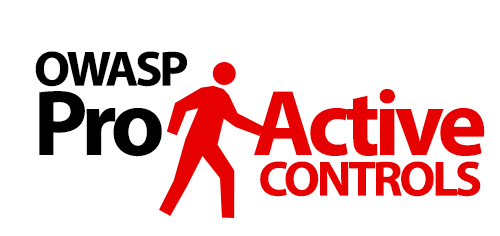This site is the archived OWASP Foundation Wiki and is no longer accepting Account Requests.
To view the new OWASP Foundation website, please visit https://owasp.org
Difference between revisions of "OWASP Proactive Controls"
From OWASP
m |
m |
||
| Line 231: | Line 231: | ||
== 7) Logging, Error Handling and Intrusion Detection TODO JIMBIRD == | == 7) Logging, Error Handling and Intrusion Detection TODO JIMBIRD == | ||
| − | Application logging should be | + | Application logging should not be an afterthought. Logging is not just important in debugging and troubleshooting. Logging also drives |
| + | |||
| + | * Application monitoring | ||
| + | * Business analytics and insight | ||
| + | * Activity auditing and compliance monitoring | ||
| + | * System intrusion detection | ||
| + | * Forensics | ||
| + | |||
| + | The AppSensor project defines a conceptual framework and methodology that offers prescriptive guidance to implement intrusion detection and automated response into an existing application. For more information please see the [[OWASP AppSensor Project]]. | ||
Application logging should be always be included for security events. Application logs are invaluable data for: | Application logging should be always be included for security events. Application logs are invaluable data for: | ||
| Line 242: | Line 250: | ||
* Helping defend against vulnerability identification and exploitation through attack detection | * Helping defend against vulnerability identification and exploitation through attack detection | ||
| − | + | Process monitoring, audit and transaction logs/trails etc are usually collected for different purposes than security event logging, and this often means they should be kept separate. The types of events and details collected will tend to be different. For example a PCIDSS audit log will contain a chronological record of activities to provide an independently verifiable trail that permits reconstruction, review and examination to determine the original sequence of attributable transactions. | |
| − | |||
| − | |||
| − | |||
| − | |||
| − | |||
| − | |||
| − | |||
| − | |||
| − | |||
| − | |||
| − | Process monitoring, audit and transaction logs/trails etc are usually collected for different purposes than security event logging, and this often means they should be kept separate. The types of events and details collected will tend to be different. For example a PCIDSS audit log will contain a chronological record of activities to provide an independently verifiable trail that permits reconstruction, review and examination to determine the original sequence of attributable transactions | ||
| − | |||
| − | |||
| − | |||
| − | |||
| − | + | It is important not to log too much, or too little - be careful not to log private or confidential data or secrets. Use knowledge of the intended purposes to guide what, when and how much. To protect the system from Log Injection, make sure to perform validation or encoding on untrusted data before logging it. | |
| − | + | For more information on how to properly implement logging in an application, please see the [[Logging Cheat Sheet]]. | |
== 8) Leverage Security Features of Frameworks and Security Libraries == | == 8) Leverage Security Features of Frameworks and Security Libraries == | ||
Revision as of 20:03, 11 March 2014



